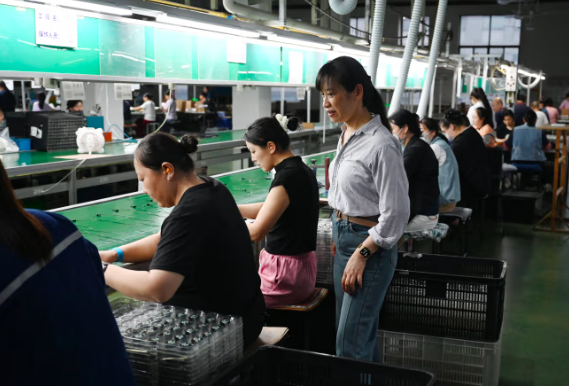




A private measure of China's manufacturing sector surged back into growth in August, reaching a five-month peak, although doubts persist about the sustainability of this rebound.
The RatingDog China general manufacturing purchasing managers index increased to 50.5 last month from 49.5 in July, as reported by S&P Global on Monday. A score above 50 indicates growth in activity, while a score below that signifies a decline.
The renewed growth in China's manufacturing sector in August was bolstered by a rise in new orders, driven by better domestic demand and effective promotional strategies, according to the surveyed panelists. Manufacturers expressed their highest level of optimism since March, fueled by hopes for improved economic conditions and the belief that their expansion strategies will enhance sales over the coming year, as per RatingDog and S&P Global.
However, manufacturers remained cautious regarding hiring, choosing to reduce staff for the fifth consecutive month in August, despite increased capacity pressures and growing business confidence, they observed.
The recovery in Chinese manufacturing activity is still uneven, according to RatingDog founder Yao Yu.
"The sustainability of this improvement hinges on whether exports genuinely stabilize and if domestic demand can accelerate," Yao stated.
Yao observed that the rate of decline in new export orders has slowed down. "This is a positive sign, but we must remain cautious, as external demand appears to be somewhat advanced while domestic demand remains weak, which may limit the potential for increased output unless domestic demand strengthens," he remarked.
Yao further stated, "The recent increase feels more like a moment of relief than a lasting surge."
The reading from Monday contrasts with another official measure released on Sunday, which indicated a decline in factory activity for the previous month. The official manufacturing PMI for August was reported at 49.4, slightly up from July's 49.3.
The RatingDog survey, conducted by S&P Global, places greater emphasis on smaller private enterprises in China and has frequently shown different trends compared to the official measure.
Looking forward, Zichun Huang from Capital Economics mentioned in a note on Monday that she anticipates continued slow fiscal spending to impact infrastructure activities negatively. "The government's initiatives to address overcapacity might suppress manufacturing output by limiting excess production," Huang noted.
In a recent indication of pressure within the Chinese economy, new home sales transactions from the 100 largest property firms in China reached 207 billion yuan, or $29.03 billion, in August, as reported by China Real Estate Information Corp. This represents a 17.6% decrease compared to the same month last year and marks the sixth consecutive month of decline.
